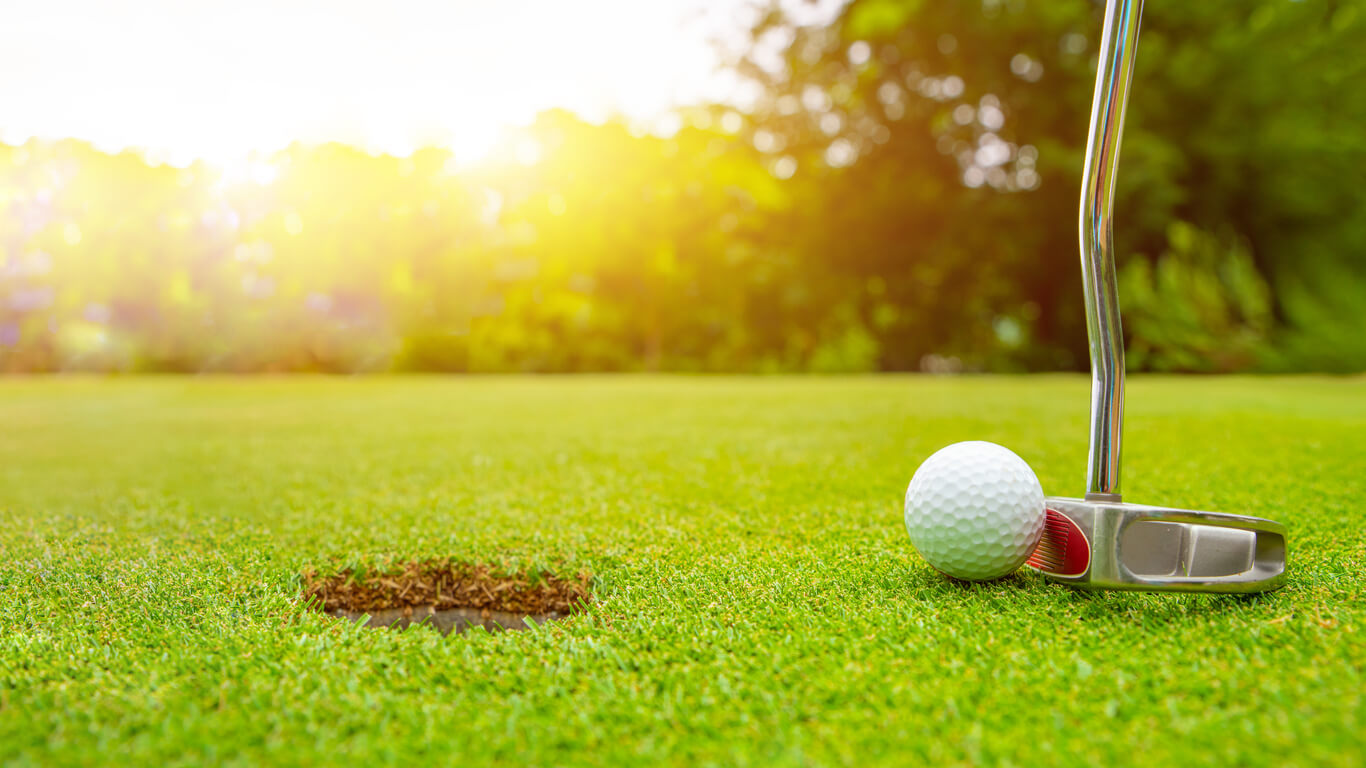
We can categorise putters in certain ways—the most obvious being the shape of the putter head.
Tiger Woods has won 14 of his 15 majors with the Scotty Cameron Newport 2-blade model, while, in 2022, 62 per cent of the world’s top 50 players were using a mallet putter.
Scotty Cameron is one of the leading putter manufacturers in the world. He explains the difference in the shape of the putter head as follows…
“A blade is a traditional putter with a straight club head and a narrow, or non-existent, flange (back cavity/area of the putter). It can also have heel and toe weighting. Blade putters can be designed with various neck set-ups such as plumbing, flare, round, mid-slant or mini-slant necks. Blades are usually favoured by the player with a bit of an arced putting stroke, as they promote a swinging gate, more flowing stroke.
“The putter-making world of mallets is where designers can be the most creative with materials, shapes, sizing and set-ups. A mallet putter favours the player who is striving to make a straight-back-straight-through stroke. Usually, heavier weighting is moved to the perimeter and toward the back of the mallet to increase MOI (Moment of Inertia), stability and forgiveness.”
Toe hang vs face-balanced putters
Another consideration you’ll often hear regarding putting is whether you’re better off with a toe hang or a face-balanced putter.
The blade putter is generally considered helpful on fast greens, good for arc stroke putters, great for feel, and for those who want a lot of precision in their putting stroke. On the downside, they aren’t as forgiving as mallets and are often harder to line up. Historically, the blade was regarded as the ‘player’s putter’ given the lack of mallet options and the success of players like Woods.
The mallet putter is more forgiving, easier to line up, and is available in various designs. It’s easy to customise and is ideal for someone with a straight back/straight-through stroke. On the downside, though, it might not suit an arc stroke, and some players may struggle on fast greens.
What the expert says…
James Jankowski is one of the leading putting specialists in the UK and has coached a number of elite players. His job is to help golfers hole more putts, help more of us understand what we should look for in a putter, and the benefit of being fitted for what we use on the greens.
“One of the biggest myths in a putter fitting is if you have an arcing stroke, then you need toe hang, and if you have less arc and less face rotation, you need a face-balanced putter.
“But it is more about matching the torque (twist) profiles of how a player reacts when they have the putter in their hands.”
Blade vs mallet putters
“A mallet will give a player the possibility of a more in-plane stroke, and it’s going to be a bit more stable. It’s a bit like a bike with two wheels and a bike with stabilisers. Because more weight is situated around the perimeter and further away from the face, it can stay more stable. A mallet can help someone if they struggle with controlling the face, and their rotation is inconsistent. It can give them some stability here.
“Generally, we would fit more club golfers into mallets to help with a more consistent rotation and strike out the middle. Blade putters are less forgiving, but highly-skilled players might like the feel and ability to manipulate them more—that’s the theory, but it doesn’t always work like that for everyone.
“I’ve had cases where someone will come in, and their rotation will be all over the place with a blade putter. Then, you put a mallet in their hands, and the difference is huge. But it may make no difference to others. The reality is that you can have a mallet that has toe hang and a blade that is close to face-balanced, and that’ll make a difference too. All I’m trying to do in a fitting is to deliver the putter as consistently as possible.”
Dr Paul Hurrion specialises in biomechanical analysis using high-speed cameras, force platforms and computers. He works with tour golfers as well as UK Athletics, International Cricket Council and the English Cricket Board.
According to a recent study, Hurrion explains that a mishit putt with a blade putter will stay more online than with a mallet.
“It is still theoretical, but because the centre of mass is closer to the face on a blade than a mallet, when you hit it off-centre with a blade, you will lose more ball speed than with a mallet, but you don’t get the ball deflecting as far offline. It’s not the twisting that makes the ball go off line, it’s the deflection away from the centre of mass, so the ball deflects offline as a result,” Jankowski adds.
“If you mishit a short putt with a mallet, you will see the ball go further offline than you would with a blade. That will happen with any putt, but it will be more noticeable on a short putt.”
The bottom line is that you should be fitted by a putting specialist to see how it performs in your hands.
“So many golfers understand the importance of having their equipment custom fitted to suit their needs and technique. This should be no different when it comes to a putter. Using specialist software, I will help you understand your stroke and recommend on putter specifications based on your stroke consistencies and tendencies.
“It’s not as simple as ‘your stroke suits a face-balanced putter.’ Instead, we’ll measure which type of putters you aim with the best and test how your stroke reacts with different putter styles, shapes and weights.”
Specialist golf insurance through Golf Care
Whatever putters you use, you might want to consider protecting them with specialist golf insurance.
With Golf Care, policies include Equipment cover up to £7,500, Public Liability of up to £10m and more. What’s more—thanks to the ‘Ripe Guarantee’, you won’t find the same level of cover for a better price elsewhere either.
Learn more about specialist golf insurance and get a quote today.
Get a quick quote for Golf Insurance
Get A Quote